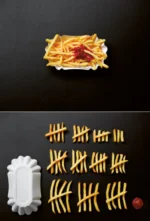Facts
Chapters > Graphs
Facts (edges) determine the content of a directed graph. They indicate a direct relation between two nodes (objects). Assume that we are given the following facts:
Joan is older than Bob, and Bob is older than Melanie
and we are asked to find out whether Joan is older than Melanie. This would be a trivial task if we knew the singers' birthdays. But even if we don't, we can accomplish the task.
We start by building a model (graph) to solve the problem using the commonsense definition of the notion of one person being older than the other, "person A is born earlier than person B". We define that the notation (Joan,Bob) denotes the fact "Joan is older than Bob".
A tuple of nodes, an edge (A,B), means node A is related to node B in the direction of the relation. Node A is called the tail, and node B the head of the edge. Please note that edges are bidirectional. In this example, an edge (A,B) does not only mean "A is older than B", but also "B is younger than A".
After adding the edge in our graph, it contains {(Joan,Bob)}. Then we add the edge (Bob,Melanie), such that the graph becomes {(Joan,Bob), (Bob,Melanie)}. Following is a picture of the graph:

Although a model is always based on a narrative, each fact represents an axiomatic correlation between two objects and supposed to be true without further consideration. For example, if a graph denotes for any two numbers (X,Y), X is greater than Y and there exists a fact (2,5), then for the particular model 2 is greater than 5, or 5 is less than 2.

